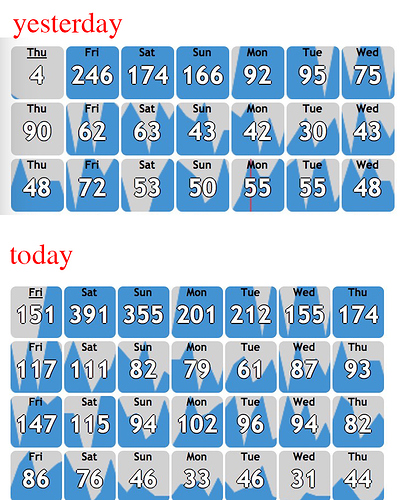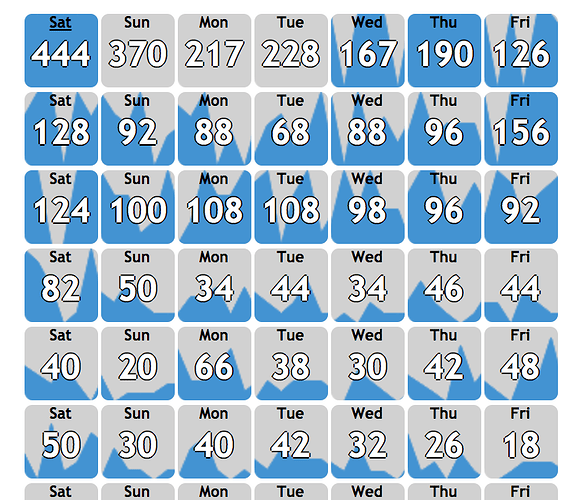Similar items are rescheduled and pushed back “a little bit”, it may be later that day or it could be the next day.
For some specifics on grading/scheduling:
A grade of 1 (“don’t know”) gives you a next review interval about 25% as long as the one that was scheduled for this review, with a minimum of thirty seconds and a maximum of one week. If it’s the first time you’ve seen an item, the default interval is ten minutes.
A grade of 2 (“so-so”) gives you a next review interval about 90% as long as the one that was scheduled for this review. If you mark something so-so on the first time you see it, the default interval is 1.4 days.
A grade of 3 (“got it”) gives an interval about 2.2 times as long as the one you just had, not the one you were scheduled for, if you studied it on time. If you remembered it while overdue, Skritter guesses that you knew it better than we’d thought, so the next interval is longer. For example, if an item was scheduled for one week, and you saw it after two weeks, you’ll get it again in about 3.4 weeks. Conversely, you don’t get much of an interval boost for seeing something again before you need to. If an item was scheduled for one week, and you saw it after one day, you’ll see it again in about 8.2 days. This means that studying too often doesn’t do much, whereas remembering something after a long time is a very efficient memory boost (if you remember it!). The initial interval for a grade of 3 is one week.
A grade of 4 (“too easy”) is like a 3, but with a factor of 3.5 instead of 2.2. The default initial interval is four weeks. You only need to press 4 three times in the first three years for an item, so it’s a very quick way to get easy stuff out of the way.
In addition to the above, each interval is randomized by up to +/- 7.5%. Items you get wrong a lot will start to grow even more slowly. Items which you always get right will grow even more quickly. And, most importantly, for each type of prompt (writing, reading, definition, tone), for each general interval range (first time, under twenty minutes, under five hours, under eight days, over eight days), Skritter will adjust these factors based on your past performance in order to target your desired retention rate. So if you often forget tones which have intervals scheduled between five hours and eight days, then Skritter will gradually reduce those intervals. If you don’t ever forget how to write things that you knew the first time you saw them, then those initial intervals will get longer and longer.
Each item’s scheduling can be affected when you review other parts for its word. If you study the writing for 先生, then if the reading and definition are also due, they will be pushed back into the future somewhat, so that the reviews don’t interfere with each other. After all, if you just saw the details for 先生 two minutes ago, it would be too easy to remember them if you got its definition prompt now. So you might see the definition prompt a little later, or the next day, depending on how the length of the current interval.

